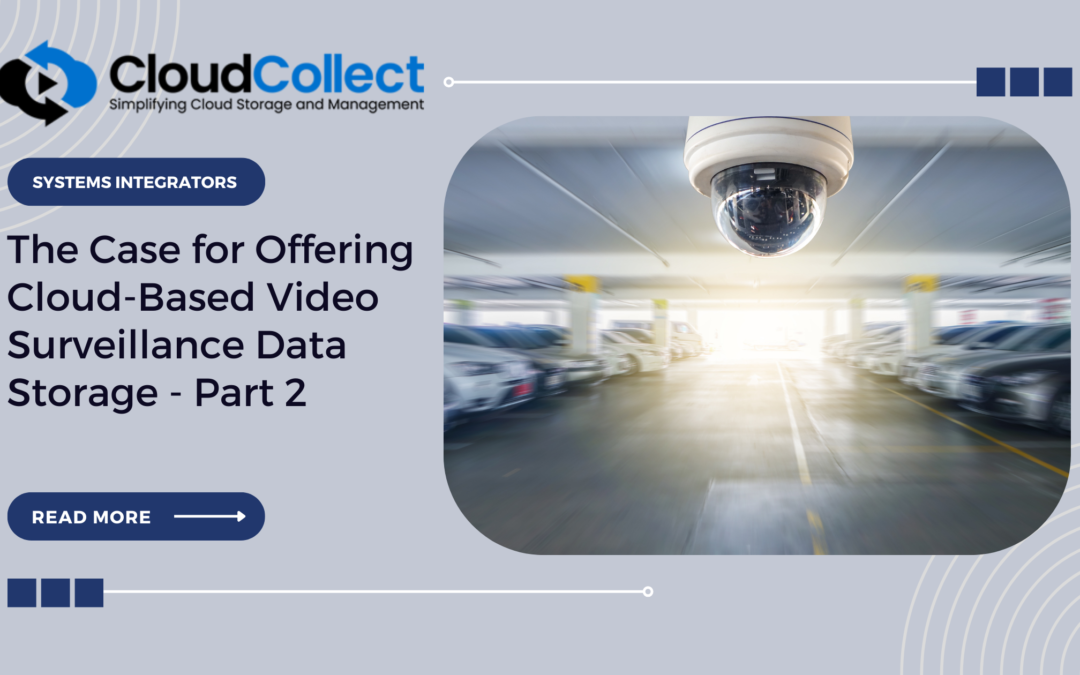In Part 1 of this series, we detailed some of the fundamental reasons why security integration companies should consider offering cloud-based video surveillance data storage. They included enhanced scalability, remote accessibility, and reduced hardware and maintenance costs. Here in Part 2, we’ll highlight additional compelling reasons as well as strategies for successful implementation, with a focus on expanding service offerings and creating recurring revenue streams.
Who doesn’t want more business? Adding cloud-based surveillance data storage to your scope of services allows you to expand and diversify your service offerings. This, in turn, can help you cater to a wider range of clients with varying needs. Here are some tips on how to achieve this:
Managed Video Surveillance as a Service (VSaaS) is a market that’s growing and growing quickly. Consider offering fully managed video surveillance solutions, which can encompass everything from system installation and maintenance to data storage and video analytics. Clients can subscribe to your services on a monthly or yearly basis, opening a new and steady stream of recurring revenue.
Different clients have different needs. Customized packages can speak to those varying needs if you tailor your offerings to suit different industries and client requirements. For example, you can propose specialized video surveillance solutions each designed to meet the specific and offer very different security challenges inherent to retail, healthcare, education, or manufacturing clients.
The option to seamlessly integrate their various security systems – such as access, alarm/ intrusion, and video surveillance – into one solution is especially attractive to end users. This holistic approach can make your company a one-stop shop for all their security needs.
Adding cloud-based video surveillance to your portfolio facilitates new and steady recurring revenue streams. Those revenues can come from several different sources. Subscription-based plans for cloud storage and remote access is one of them. With this model, clients pay a recurring fee, ensuring a consistent stream of income for your business. These subscriptions can be tiered based on storage capacity or additional features.
Maintenance contracts not only give your end users peace of mind – they can give you peace of mind, as well, and the assurance of continuous recurring revenue. By including ongoing maintenance and support services as part of your package, clients are more likely to engage in long-term contracts.
Industry surveys clearly show that end users look to their systems integrator to keep them abreast of new technologies and capabilities. It’s beneficial as well as profitable to continuously offer upgrades and add-on services, such as advanced video analytics, enhanced storage options, or integration with emerging technologies such as AI and IoT. This commitment to innovation on your part will encourage clients to stay with your services and explore new features, increasing their lifetime value.
And, as we detailed in Part 1 of this series, a cloud-based video storage solution offers improved security and reliability over an onsite one. That’s because cloud-based storage solutions often come with robust security features and redundancy measures. This can be a strong selling point, especially for clients with critical or enterprise-level security needs. It’s also important to emphasize the benefits of remote monitoring and management that cloud storage affords. Drive home the point to clients that they can access their video feeds and data from anywhere with an internet connection, allowing for real-time surveillance and quicker response to security incidents. This level of flexibility and accessibility can be a major selling point for businesses seeking to enhance their security operations.
Integrating cloud-based video surveillance data storage into your offerings can open new and lucrative opportunities for your security integration company. By diversifying your service offerings, establishing recurring revenue streams, and emphasizing the advantages of enhanced security and remote accessibility, you can position your business for success in an increasingly competitive market. In Part 3 of this series, we’ll delve into the technical aspects and strategies for implementing cloud-based video surveillance effectively.
We at Cloud Collect are here to support you grow your business!

